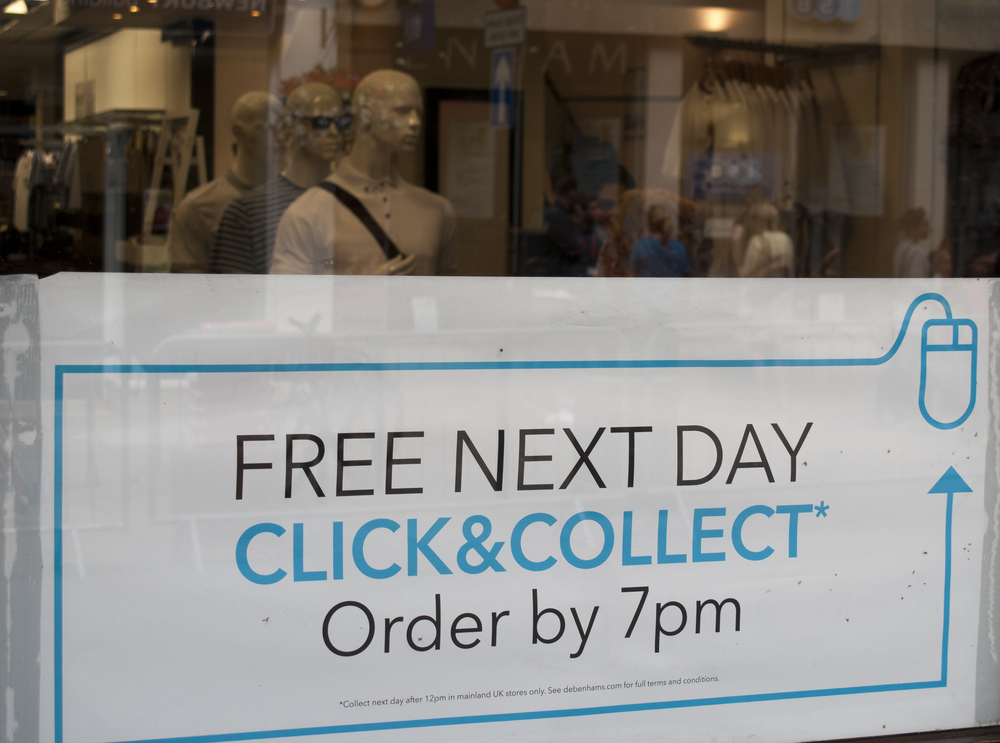With 14% growth in the online retail market in 2014, resulting in £104bn being spent online, and the forecast for 2015 being 12% market growth and £116bn being spent, many could be forgiven for thinking that online shopping is sounding the death knell for retail in the high street.
With e-retail currently accounting for an estimated 24% of the total retail market, I am sure that many high street stores are feeling the pressure to appeal to their shoppers both on and offline, and most retailers in the past few years have had to adapt to survive.
Today, retailing is an omni-channel experience underpinned by all manner of technologies. In order to influence buying patterns and offer a ‘connected in-store’ experience, retailers need to both innovate in-store, and rethink their online strategies – with the aim of attracting customers who will purchase in both physical stores and online.
In particular they need to think about how customers want to research, select, receive and return their goods, and as a result we have seen considerable innovation in the market in the past few years.
The ‘online halo’
Combining in-store and online strategy is an important step to helping retailers bridge the gap between the two; one way is to entice online customers into store (‘the online halo’) by innovative showcasing of a carefully chosen selection of products that can be purchased online.
The ‘FOUND at John Lewis’ initiative (due to showcase in Birmingham’s new store next month) is designed to attract customers into store to view a frequently changing display of new fashion brands, experiences and technologies that reflect a holistic approach to developing a particular style.
This initiative is designed to drive up footfall in store, but is backed up by matching FOUND collections on the John Lewis website; this ‘edgy’ approach will perhaps drive a change in the behaviour of some of the 77% of people that currently research products online before setting foot in store.
Click and Collect
Initiatives such as ‘Click and Collect’, both in-store and through convenient locations, have taken off incredibly quickly, as ease of use has become the expectation from consumers using a mixture of offline and online channels.
Research suggests that a consumer is likely to spend an additional £16 in store when they go out to collect or return a parcel, indicating that online shopping could therefore ultimately be favourable to the high street, providing that the in-store experience is a favourable one.
In fact a recent survey states that 58% of shoppers still prefer to visit their local shops.
With the planning permission regulations eased earlier this year, to enable shops to build a new Click and Collect service without having to clear a mountain of red tape, more high street stores will be able to use this delivery and returns method to encourage higher footfall.
The Pricing Retail Space Report found that fashion retailers operating in city centre locations are likely to be the winners here, gaining substantially from this new freedom, with productivity at those stores expected to rise 34%.
Seamless integration
With more and more products being ordered online, on-time delivery and simple returns are increasingly emotive subjects. Customer loyalty depends on high levels of order management, fulfilment, despatch, delivery and customer service, as well as ease of return.
It is therefore essential that the whole omni-channel experience is carefully stitched together through seamless integration of disparate systems, in-store, online and in the warehouse.
Ideally stock control should be held centrally so that goods can be despatched from the nearest store or fulfilment centre, customer-entered data used to order the goods is transferred seamlessly through all the necessary systems, multiple delivery and returns options can be offered, and parcels can be tracked from order through to final delivery. Here at NetDespatch we work with hundreds of partners to ensure that an omni-channel retailer can create the best customer experience possible.
Bricks and mortar
Even though lower footfall on the high street has been recorded in the last few months in the UK, some online retailers are turning heads by making the move to bricks and mortar. Online food company Graze announced in July that it was to stock its products in supermarkets.
Additionally some retailers are even introducing ‘pop up’ shops like Kim Winser of Winser London, which provide the online retailer exposure to high street shoppers, without the commitment of a lease. It would seem that these retailers are making an effort to understand their customers’ demands for an omni-channel experience.
> See also: Retail IT: why can't you be more like Amazon?
Forward thinking retailers who put the customer experience at the heart of their strategy, with easy access mobile online shopping mixed with a convenient bricks and mortar high street presence, will be those that ultimately thrive.
While the outlook on the high street doesn’t look terribly sunny, retailers are starting to realise the benefits of omni-channel retail and how they can create a seamless and immersive shopping experience, which will leave customers happy and more willing to come into the stores in our town centres and high streets, both to research their online purchases, and then to collect or return them.
From displaying goods in their stores and on their website, to the ‘last mile’ of the delivery, retailers must consider every step carefully to ensure that customers come back into store, again and again.
Sourced from Becky Clark, CEO, NetDespatch







